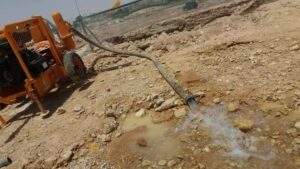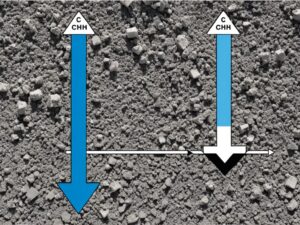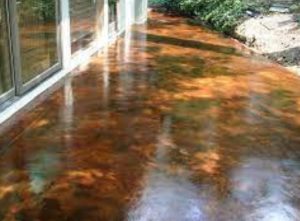Types of ceramic tiles for renovation

Ceramic tiles for renovation: Making the reform of your home or your premises involves many decisions, not only at the aesthetic or facilities level but also decisions related to the economy and functionality. And choosing the types of ceramic tiles is one of those decisions. All of this can compromise the success of your project because it is a choice that may not be reversed. Or, if it does, it will disrupt your economy less noticeably.
In today’s post, we will help you make one of the most complicated decisions when choosing finishing materials for your renovation: ceramic tile. Who today is not in the position to choose the type of floor for your bathroom or the type of tiling for the kitchen? It is one of the most expensive decisions because to the aesthetic you have to add the economic part and the functional part. With which we are going to try to make a small classification of the types of tiles that are on the market, so that you can choose with more information, and thus minimize problems in your reform.
We can classify the types of ceramic tiles in different ways, but we are going to focus on the 2 that we thin to help the most when choosing a coating: by composition and by format. We are going to reel off each one of them:
CHOICE OF COATING BY ITS COMPOSITION
There are 5 types of ceramic tiles:
fired clay ceramic tile
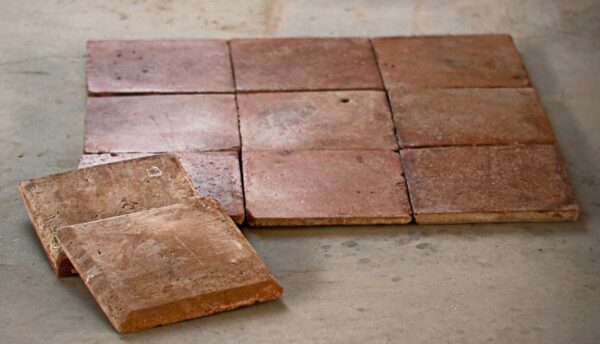
Terracotta tiles
Baked clay: it is a material that has been used over the years with widespread use, and that in recent times, despite being somewhat disused in favor of other more technical coatings, has been used in environments “Rustic and vintage” (very fashionable lately). They are manufactured by hand, extrude,d, and pressed, hence their irregular appearance and their ability to give more personality to the spaces where they are located.
These tiles can be either porous or very porous, not glazed. That is, they have a high water absorption coefficient. That is why its use is recommended in dry environments with little traffic since it is a “not very clean” material due to its porosity. Even so, we can find it in humid outdoor environments such as porticoed terraces or pool terraces. It is also very common to give a subsequent treatment (varnishes) to improve the waterproof capacity of the tile. This also prevents the appearance of efflorescence.
It presents changes of tone by piece, so it is recommended to mix the pieces in your application taking into account their variation of tones.
red-paste-ceramic-tile
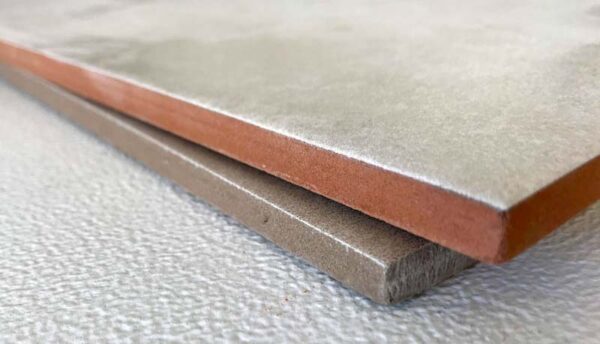
Red body tile
Red paste: red paste ceramic is recommended for indoor environments, as it is the softest material of commercial glazed ceramic. It differs from white paste fundamentally in the type of clay used, so it also differs in its technical properties and cost. The clay used for the elaboration of this ceramic is extracted from national quarries, mainly from the Castellón area, so the impact of the raw material is lower in the manufacturing cost.
Regarding the technical properties, although it is not very different than red-paste ceramic, it is true that the most commercialized sizes are those of small format since larger formats are more prone to break more. Although it can be considered the “bad brother” of the two most commercialized types (red and white paste), indeed,t they are still widely used for tiling bathrooms and kitchens with excellent results.
White paste: as we have already mentioned before, the difference with red paste tiles is in the type of clay, which is brought from other countries, such as England or Turkey. This makes the material more expensive by having to import the main raw material. The properties of this material make the enamels have better absorption and, therefore, that the colors are more vivid (they do not have oxides and they do have a high iron content). They have better resistance to abrasion, which allows a more versatile use (indoor and outdoor) and a greater variety of formats. This material is widely used both in tiling and flooring, as it is a very versatile coating, with a choice of different formats, and that behaves very well over time.
Stoneware: stoneware tiles have been the most used in the years of the real estate boom, as they are an inexpensive and “attractive” material (for people who are not too demanding). Within stoneware we can differentiate 2 types (we do not count porcelain stoneware, since we believe that it needs its own section):
types-of-ceramic-tiles

Rustic stoneware tiles
Rustic stoneware: they are colored tiles, we can differentiate their porosity by low-medium and high. It is not very usual to see enamels on this type of tile, but there may be. They are manufactured by extrusion and a single high-temperature firing. They are fundamentally characterized by the detonation of their visible face, as well as their roughness, which is why they are characterized by having good anti-slip behavior. That is why it is a massive placement on the terraces of typical summer villas. Its application with an open joint in pavements is very common since they present notable irregularities in their geometry.
Glazed Stoneware: they are low porosity tiles, which are manufactured by pressing and extrusion. The market offers a wide variety of products, with different formats and finishes. They are used mainly in flooring and being glazed, they are easily cleaned. However, they have a medium mechanical capacity and are characterized by their decorations and glazes.
types-of-ceramic-tiles

Porcelain stoneware tiles
Porcelain stoneware: we have extracted this type of tile from the «stoneware» classification because we understand that this material has evolved so much and has had such a specific and at the same time so wide use that we understand that it requires its own classification. This coating has evolved a lot in recent years, being the reference coating in most projects, mainly for 3 reasons: great mechanical capacity (high resistance to impact and flexo compression), a wide variety of formats (especially large format) and many options finish and design.
It is a very non-porous ceramic, with a great variety of colors. It can be chosen with or without enamel, polished or unpolished, and its manufacture is done by extrusion or pressing, with a single firing. It is used both in bathroom and kitchen tiling as well as in flooring, indoors or outdoors. Given its flexibility, it allows drawings and serigraphs on its surfaces, hence its wide range of imitations of noble materials such as wood or natural stone.
CHOICE OF COATING BY ITS FORMAT CERAMIC TILES FOR RENOVATION
We differentiate 3 types of ceramic tiles according to the format:
Small format: in this category we could include tiles of the following sizes (in cm): 10 × 10; 15 × 15; 20 × 20; 10 × 20; 15 × 30; 30 × 30. They are formats especially suitable for wall cladding, classic format, and require great skill when laying. Labor is usually higher than if it were a medium format since more pieces have to be placed per surface, which requires more application time.
types-of-ceramic-tiles

Small format tiles
Medium format: we include the pieces of the following dimensions (in cm): 30 × 30; 30 × 45; 45 × 45. These formats have been widely used in wall coverings, but especially in flooring. They are the «standard» tiles, the most used in the construction boom due to their ease of application and versatility. These formats are increasingly in disuse, being replaced by the large format.
types-of-ceramic-tiles

Large format: these are the largest ceramic wall tiles (in cm): 30 × 60; 30 × 90; 60 × 60; 60 × 90; 90 × 90; 90 × 120; 120 × 120; 18 × 120; 18 × 180… It is the fashionable format, the one preferred by most designers and owners. They are chosen for 2 main reasons:
They give a greater sense of spaciousness and continuity ceramic tiles for renovation
Versatility in your applications (flooring, tiling, facades …)
They have a multitude of advantages, but also disadvantages. They are formats that, as a general rule, are more expensive both for the material and for the labor of their application, since many of them require 2 people to place them.
Depending on the use of the space (a bathroom in a home is not the same as a terrace in a swimming pool or the flooring of a commercial premise), we prescribe one type of tile or another, mainly due to its technical and aesthetic conditions. What is very important is that, if you want to have a good laying result, choose a first-class ceramic, well-balanced and plumb, and regular in all its cuts. Micron deviations can make the installation difficult and not look good.
We hope that this information regarding the types of ceramic tiles will help you with your choice. We have tried to synthesize the main characteristics of the ceramic tile market so that it is easy for you to choose and have a good result in your reform. Good luck!!!

